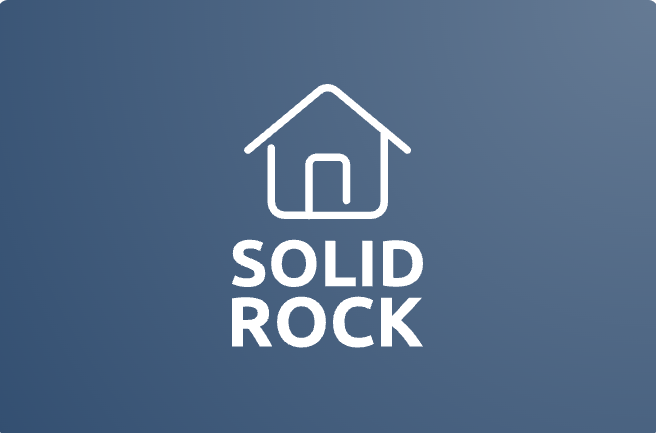Buying land for your dream home is a big investment for you and your family. While you might use a real estate professional to help you find just the right piece of land, there are ten things you will want to take into consideration when looking at each property. While these ten elements may seem intimidating and like there is a lot to decide on, our expert team of home builders will guide you during the entire process. View our guide here and start finding the best plot of land to build the home of your dreams.
1. Location, Location, Location
Before you talk with a real estate professional or begin to look at land, you and your family need to determine what is most important to you in a location. How much do you have to spend on land? Is it the quality of the schools and the activities you will be close to that matter the most? Do you want to be in a more rural location with acreage and privacy? Are you looking for a lot that is already developed or are you willing to spend the time and money necessary to develop the property? Do you want to be close to freeway access? Do you want to be on the water or have a view? What is the minimum size lot you will need for your dream home? These are many of the questions you should think about. Then prioritize what is most important to you, your family and your project. Our team will help guide you in your decision and help you determine what location will work best for your family and your home.
2. Can You Build on It?
While all land may seem to suit the construction of your dream home, it is essential that you determine how much of the lot can be built upon. Does that portion meet the needs of the dream home you and your family want to build? Topography and soil conditions are two vital issues. Poor soils can affect the concrete footing size and the cost of construction. You’ll also want to be sure that the land is level and that your home won’t settle over time. Once your land is deemed as safe to build on, everything will start falling into place and you can begin the construction process.
3. Types of Land
There are two types of property. There is land that is developed, which has the utilities brought to the site and roads built. The second is undeveloped land. If you buy undeveloped land, you will be responsible for bringing the utilities to your home, and in many cases, you must build and maintain the roads into your property. Your UBuildIt Construction Consultant can give you an estimate of what these improvements might cost. There are pros and cons to each type of land. Knowing what your priorities are and what money you have to spend is essential to determining what type of property fits you project best.
4. Zoning
When looking at a piece of land, talk with your real estate professional and your local zoning board regarding what factors you might need to take into consideration before you build. Environmental factors could restrict where you place your home on your land. Future community development could increase or decrease the value of your property. Also, check for setbacks. This is the minimum distance that your home can be built from the property line. These can vary between 10 to 30 feet and will impact where you can place your home on the property. In addition, take a look at the land that surrounds the property you are interested in purchasing. Ask your real estate professional or local planning commission tell you what the plans are for it? While you can’t foresee everything, with a little homework you can make a more informed decision on the land you want to purchase.
5. Permitting
Permits are one of the most important things that you will need to acquire while building your home. These permits are what will allow you construction team to begin working on your home. There are several types and different cities will require different permits. What types of permits will be needed in the county or city where your prospective property is located? Some jurisdictions have very limited requirements for permitting, perhaps just for a well or septic system. Others are more comprehensive, requiring multiple permits for all aspects of your project. Talk to your local building department or your UBuildIt Construction Consultant. They will know what is needed for your area.
6. Restrictive Covenants
There can be restrictive covenants associated with the land you buy. A restriction covenant is a legal obligation on a property deed that is imposed upon the buyer. Such restrictions frequently “run with the land” and are enforceable on subsequent buyers of the property. A typical example might be: “no fence may be built on the property except of dark wood and not more than six-feet high,” etc. These restrictive covenants are put into place to give a development a more standard appearance and to protect property values. They can also be used to limit or control the activities that take place in that development such as in-home businesses and home rentals. Since these covenants can also address the minimum size residence allowed, the number of homes on a lot and what type of construction the home must be, it is essential you know of any covenants before you buy the land. Your real estate professional should have them available for you or can readily access them.
7. Utilities and Roads
Before you buy, be sure to know what utilities have been brought to the property. Frequently, undeveloped land has few, if any, utilities coming onto the property. If you choose to buy property that does not have utilities, you will be responsible for cost and effort to bring them onto your land. This includes power, water, gas, telephone and cable. Contact the local utilities in your area to determine what it will take to do this. For many properties in more rural areas, water is not available to be run into the property so you will need to drill a well and install a septic system. While there are several different types of wells, they all must be built to tap into and deliver sanitary water. They must be drilled deep enough so that the water comes from an aquifer, or layer of saturated soil or rock. Visit your local health department to determine what the regulations are for your area. If you have not had experience with a septic system before, you should be assured most modern septic systems function in a clean and efficient manner and are regulated by local agencies that closely monitor their design and installation. Note: Not all land will “perk” properly. Meaning, it must be tested for compatibility with a septic system. This should be considered when purchasing land. With undeveloped land, you may have to build a private road or driveway in from the public thoroughfare. If so, will you be responsible for maintaining it? Also, do you have access to the public thoroughfare or is there a recorded easement in place which will allow you to access the property? Even some developed land includes a private road you may share with others in the development. When this occurs, you and your neighbors will be responsible for the maintenance of that road. Talk with your UBuildIt Consultant about what might be involved for your prospective land purchase. While the cost and effort of bringing utilities and roads onto your property is something you need to take into consideration in your planning, the beauty and privacy of a more rural location can really be worth it.
8. Liens and Easements
These elements may or may not be a factor in any property you are thinking of buying. However, if either of them is attached to the deed for your land, you need to know about them in advance and plan for them as you design your home. A lien is a monetary claim against the property to secure an obligation or debt of the current property owner. This might be for back taxes or for work done by the current owner for which payment has not been made. These generally show up when a title search is done and most banks require that they be satisfied before the purchase can be completed. An easement is someone’s right to use your property for a stated purpose, and like a restrictive covenant, it “runs with the land” and transfers with an ownership change. There are two types of easements you may encounter. The first is an easement in gross which would be with a utility, allowing them to place power or gas lines on the property. The second is appurtenant easements that involve two property owners who are next to one another. One has the right to use the property of the other, such as placing a driveway to a public road through the property of the adjacent neighbor. It is possible that an easement is not currently being used but don’t assume that will always be the case. If it is part of your deed, then it can be enforced at any time. Your real estate professional can help you determine if there are liens or easements attached to the property.
9. Surveys
When looking at a piece of land, look for the iron pins at the corners of the property, or whenever the property line makes a turn. Some iron pins are also found in the center of the road. If you are at all unsure as to the boundaries of the property, look at an existing survey or have the current one updated. You need to be sure of the boundaries in order to place your home in the correct spot on the property.
10. Costs to Develop the Land
Once you know what land you want to buy, take into consideration the costs involved to develop it before you make an offer. If you are looking at two pieces of land for approximately the same price and size, but one will require a well and septic system and significant excavation to meet the needs of your home, will the extra costs still be worth it to you and your family? It may well be, but be sure to have all the facts before you sign on the dotted line. Your UBuildIt Construction Consultant can help you evaluate the pieces of land you are considering and what it will take to build on each.

